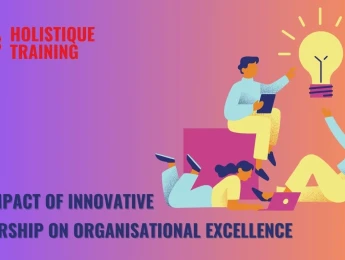- Table of Contents
- Introduction
- What Do Planning and Scheduling Mean?
- Why Is Planning and Scheduling Important?
- Enhanced Productivity
- Reduced Stress and Uncertainty
- Improved Resource Management
- Better Decision-Making
- Enhanced Coordination and Communication
- Increased Accountability
- Risk Management
- Optimised Workflow
- Better Customer Satisfaction
- Long-Term Success
- 10 Principles for Effective Planning and Scheduling
- 1. SWOT Analysis
- 2. SMART Goals
- 3. Prioritisation
- 4. Resource Allocation
- 5. Time Management
- 6. Flexibility and Adaptability
- 7. Regular Monitoring and Review
- 8. Clear Communication
- 9. Delegation and Empowerment
- 10. Continuous Improvement
- How Does Software Help with Planning and Scheduling?
- 1. Centralised Task Management
- 2. Advanced Scheduling Capabilities
- 3. Automated Reminders and Notifications
- 4. Real-Time Collaboration
- 5. Data Analytics and Reporting
- 6. Scenario Planning and Simulation
- 7. Integration with Other Systems
- 8. Customisation and Scalability
- 9. Enhanced Accuracy and Precision
- 10. User-Friendly Interfaces
- Planning and Scheduling in Different Fields
- Project Management:
- Healthcare:
- Petroleum Industry:
- Manufacturing:
- Event Management:
- Conclusion
Introduction
Effective planning and scheduling are critical components for achieving success in any endeavour, whether it’s managing a large-scale project, running a healthcare facility, or organising daily tasks. By understanding these concepts and applying best practices, individuals and organisations can ensure smoother operations, improved productivity, and better results. This guide delves into planning and scheduling, why they are crucial, and how they can be optimised across various fields.
What Do Planning and Scheduling Mean?
Planning and scheduling are distinct yet interconnected processes that play a pivotal role in achieving objectives efficiently.
Planning involves outlining the steps and resources needed to reach a specific goal. It sets the foundation by defining what needs to be done, who will do it, and how it will be accomplished. Planning encompasses setting objectives, determining resources, and establishing timelines.
Scheduling, however, involves assigning specific times to the tasks identified during the planning phase. It translates the plan into actionable steps with defined deadlines, ensuring that resources are allocated effectively and tasks are completed on time.
Both processes are integral to effective management and execution. Without planning, it is challenging to know what needs to be done and why, while without scheduling, it becomes difficult to ensure that tasks are completed in a timely manner.
Why Is Planning and Scheduling Important?
The significance of planning and scheduling extends far beyond simply organising tasks and setting deadlines. These processes are fundamental to achieving efficiency, managing resources, and ensuring the successful completion of projects and daily operations. Here’s a deeper exploration of why effective planning and scheduling are critical:
Enhanced Productivity
Effective planning and scheduling directly impact productivity by providing a structured approach to task management. When plans are well-defined and schedules are clear, team members understand their responsibilities and deadlines. This clarity allows individuals to focus on their specific tasks without the need to reassess priorities or seek clarification constantly. As a result, tasks are completed more efficiently, and overall productivity improves. For instance, in a manufacturing plant, detailed production schedules ensure that each stage of the production process is executed without unnecessary delays, leading to higher output and reduced downtime.
Reduced Stress and Uncertainty
A well-crafted plan and schedule reduce uncertainty by providing a roadmap for what needs to be done and when. This predictability alleviates stress for team members and managers alike. When everyone is aware of the tasks ahead and their deadlines, it reduces the anxiety associated with last-minute changes and unexpected issues. For example, in a healthcare setting, a well-organised schedule for patient appointments and staff shifts ensures that everyone knows their responsibilities and can prepare accordingly, reducing stress and enhancing job satisfaction.
Improved Resource Management
Planning and scheduling are essential for optimal resource management. Organisations can avoid overuse or underutilization by identifying the resources required for each task and allocating them appropriately. Effective resource management helps balance workloads, manage budgets, and ensure that materials and equipment are available when needed. For instance, in a construction project, a detailed project schedule helps coordinate the delivery of materials and schedule labour, preventing delays and cost overruns.
Better Decision-Making
Clear plans and schedules provide valuable insights that aid in decision-making. When managers have a comprehensive view of the tasks, deadlines, and resource allocation, they can make informed decisions regarding prioritisation, resource adjustments, and risk management. For example, in a project management scenario, a Gantt chart allows managers to see the project timeline and dependencies, helping them make decisions about adjusting deadlines or reallocating resources to address potential bottlenecks.
Enhanced Coordination and Communication
Planning and scheduling foster better coordination and communication within teams. When a plan is in place and a schedule is established, all team members are aligned with their roles and responsibilities. This alignment promotes collaboration and reduces misunderstandings. In a large-scale event, a detailed event schedule ensures that all vendors, staff, and volunteers are aware of their tasks and timing, leading to a smoother execution of the event.
Increased Accountability
Accountability is reinforced through effective planning and scheduling. When tasks are assigned with clear deadlines, team members understand their responsibilities and are held accountable for their completion. This accountability encourages individuals to stay focused and motivated, knowing that their performance directly impacts the project's overall success. For example, in a software development project, assigning specific tasks to developers with set deadlines ensures that everyone knows their deliverables and the timeline for completion.
Risk Management
Planning and scheduling are crucial for identifying and mitigating risks. Organisations can address issues by anticipating potential challenges and developing contingency plans before they escalate. A well-structured plan includes risk assessments and contingency strategies, allowing teams to respond proactively to unexpected problems. For instance, a detailed schedule with built-in contingencies in a supply chain operation helps manage potential disruptions, such as shipment delays or equipment failures.
Optimised Workflow
A well-developed plan and schedule help streamline workflows by outlining the sequence of tasks and activities. This optimization reduces inefficiencies and ensures that processes are completed logically and on time. In a research project, a detailed schedule helps in coordinating various stages of the research, from data collection to analysis, ensuring that each phase progresses smoothly and on schedule.
Better Customer Satisfaction
Effective planning and scheduling contribute to higher levels of customer satisfaction by ensuring that products and services are delivered on time and meet quality standards. In a retail business, a well-organised schedule for inventory management and customer service ensures that products are available when customers need them and that their inquiries are addressed promptly, leading to a better overall customer experience.
Long-Term Success
Finally, effective planning and scheduling lay the groundwork for long-term success. By establishing clear objectives, setting realistic timelines, and managing resources efficiently, organisations position themselves for sustainable growth and achievement. For instance, a comprehensive plan with scheduled milestones in strategic business planning helps companies track progress toward their long-term goals, make necessary adjustments, and achieve their strategic vision. Also, statistics show that companies that write down their business plans grow 30% faster than their competitors.
In summary, planning and scheduling are not merely administrative tasks but essential components of effective management and operational success. Enhancing productivity, reducing stress, improving resource management, and facilitating better decision-making play vital roles in achieving organizational goals and ensuring smooth operations across various fields.
10 Principles for Effective Planning and Scheduling
Mastering planning and scheduling involves more than just setting deadlines and allocating tasks. It requires applying principles that enhance efficiency, ensure alignment, and adapt to changing circumstances. Here’s an in-depth look at ten principles that can guide effective planning and scheduling:
1. SWOT Analysis
SWOT Analysis (Strengths, Weaknesses, Opportunities, Threats) is a strategic tool for identifying and understanding internal and external factors that could impact a plan or schedule.
- Strengths: Assess what resources, capabilities, or advantages you have that can be leveraged. For example, if a team has advanced technical skills, these should be utilised effectively in project planning.
- Weaknesses: Identify areas where there are limitations or challenges. This could be a lack of specific expertise or resource constraints.
- Opportunities: Look for external factors that could benefit your plan. For instance, market trends that align with your project goals can provide new avenues for growth.
- Threats: Recognize potential risks that could impact the plan’s success, such as economic downturns or competitive pressures.
By conducting a SWOT analysis, you can create a plan that capitalises on strengths, mitigates weaknesses, seizes opportunities, and prepares for threats, thereby making your planning and scheduling more robust and resilient.
2. SMART Goals
SMART Goals ensure that objectives are clear and attainable. This framework helps in setting goals that are:
- Specific: Clearly define what is to be achieved. For example, instead of saying "increase sales," a SMART goal would be "increase sales by 15% over the next quarter."
- Measurable: Establish criteria to track progress. This could be sales figures, completion rates, or performance metrics.
- Achievable: Ensure the goal is realistic, given the resources and constraints. Set goals that are challenging yet attainable.
- Relevant: Align the goal with broader business objectives. Ensure that achieving this goal contributes meaningfully to the overall strategy.
- Time-bound: Set a deadline for achieving the goal. This creates a sense of urgency and helps in planning the schedule around it.
Applying the SMART criteria to your goals makes planning and scheduling tasks that drive progress and success easier.
3. Prioritisation
Prioritisation involves arranging tasks in order of importance and urgency. Effective prioritisation ensures that critical tasks are completed first, preventing delays in achieving key objectives.
Eisenhower Matrix: This tool helps categorise tasks into four quadrants based on their urgency and importance:
- Urgent and Important: Tasks that need immediate attention and have significant consequences if not done.
- Not Urgent but Important: Tasks that contribute to long-term success but do not require immediate action.
- Urgent but Not Important: Tasks that require immediate attention but do not significantly impact long-term goals.
- Not Urgent and Not Important: Tasks that are neither urgent nor important and can be delegated or eliminated.
Prioritising tasks helps in focusing efforts on activities that have the greatest impact, thereby improving efficiency and effectiveness.
4. Resource Allocation
Resource Allocation involves distributing available resources—such as personnel, finances, and materials—where they are most needed. Effective resource management ensures that resources are used optimally to achieve project goals.
- Resource Planning: Identify the required resources for each task and ensure availability. For instance, in a construction project, labour and materials are allocated based on the project timeline and requirements.
- Capacity Planning: Assess the capacity of resources to handle the workload. Avoid overloading resources to prevent burnout and ensure sustainable performance.
You can avoid bottlenecks, reduce waste, and enhance overall productivity by accurately allocating resources.
5. Time Management
Time Management is crucial for developing a realistic schedule and ensuring tasks are completed within the set timeframe. According to Zoom Shift, poor time management can lead to wasted time, decreased productivity, and lost revenue. Here are some techniques you can use to eliminate these effects:
Gantt Charts: Use Gantt charts to visualise project timelines, task dependencies, and milestones. This helps in tracking progress and adjusting schedules as needed.
Time-Blocking: Allocate specific blocks of time for focused work on individual tasks. This method helps in minimising distractions and improving productivity.
Effective time management ensures that deadlines are met and projects are completed on schedule, contributing to overall success.
6. Flexibility and Adaptability
Flexibility and Adaptability involve being prepared to adjust plans and schedules in response to unforeseen changes or challenges.
- Contingency Planning: Develop contingency plans to address potential risks and changes. For instance, if a supplier fails to deliver materials on time, have an alternative supplier ready.
- Regular Reviews: Continuously monitor progress and make adjustments as needed. Regular reviews help identify deviations and enable timely corrective actions.
Being adaptable helps manage uncertainties and ensures that the plan remains relevant and effective under changing conditions.
7. Regular Monitoring and Review
Regular Monitoring and Review involve tracking progress against the plan and schedule to ensure that objectives are being met.
- Performance Metrics: Use key performance indicators (KPIs) to measure progress and assess performance. For example, track project completion percentages or budget adherence.
- Progress Reports: Generate regular progress reports to provide updates on task status, achievements, and any issues encountered.
Regular monitoring and reviews enable you to stay on track, address issues promptly, and make data-driven decisions for continuous improvement.
8. Clear Communication
Clear Communication ensures that all stakeholders are informed about the plan and schedule, facilitating alignment and coordination.
- Communication Plans: Develop a communication plan that outlines how information will be shared with team members and stakeholders. This includes regular updates, meetings, and feedback mechanisms.
- Documentation: Maintain clear and accessible plan and schedule documentation, including any changes or updates.
Effective communication prevents misunderstandings, aligns expectations, and enhances collaboration among team members.
9. Delegation and Empowerment
Delegation and Empowerment involve assigning tasks and responsibilities to team members while providing them with the authority and resources to complete them.
- Task Assignment: Delegate tasks based on team members’ skills and expertise. Ensure that each person has a clear understanding of their responsibilities and deadlines.
- Empowerment: Encourage team members to take ownership of their tasks and make decisions within their scope of work. Empowered employees are more motivated and engaged.
Delegation and empowerment enhance productivity, foster a sense of ownership, and ensure that tasks are completed efficiently.
10. Continuous Improvement
Continuous Improvement involves regularly evaluating and refining planning and scheduling processes to enhance their effectiveness.
- Feedback Mechanisms: Collect feedback from team members and stakeholders to identify areas for improvement. Use this feedback to make necessary adjustments to the planning and scheduling process.
- Lessons Learned: Analyse past projects and tasks to identify lessons learned and best practices. Apply these insights to future planning and scheduling efforts.
By continuously improving your processes, you can enhance efficiency, adapt to changing needs, and achieve better outcomes.
Applying these principles to planning and scheduling helps create a structured approach that drives efficiency, enhances productivity, and ensures successful outcomes. Whether you are managing a complex project or organising daily tasks, incorporating these principles into your planning and scheduling efforts will lead to more effective and successful results.
Metric | Planning | Scheduling |
Measurement Focus | Goal achievement and strategic alignment | Task completion and adherence to deadlines |
Performance Indicators | Milestones and deliverables | Time spent versus planned time |
Evaluation Frequency | Periodic reviews and updates | Daily or weekly progress checks |
Adjustments | Strategic changes and long-term revisions | Immediate rescheduling and time adjustments |
Success Criteria | Achievement of overall objectives | Timely task execution and resource allocation |
Table: Metrics to measure the effectiveness of planning and scheduling
How Does Software Help with Planning and Scheduling?
In the realm of planning and scheduling, software tools play a transformative role by enhancing efficiency, accuracy, and flexibility. These tools cater to various needs, from simple task management to complex project planning, providing valuable features that streamline processes and facilitate better decision-making. Here’s an in-depth look at how software assists with planning and scheduling:
1. Centralised Task Management
Planning and scheduling software centralises all tasks, deadlines, and resources into a single platform. This centralisation helps organise and track tasks more efficiently.
- Task Lists and Kanban Boards: Tools like Trello or Asana allow users to create detailed task lists and visualise workflows using Kanban boards. Tasks can be categorised, assigned, and tracked through various stages of completion, providing a clear overview of project progress.
- Shared Calendars: Integrated calendars in tools like Microsoft Outlook or Google Calendar enable teams to schedule meetings, set deadlines, and track important dates in a unified view. This ensures that everyone is aware of key milestones and avoids scheduling conflicts.
Centralised task management simplifies oversight, reduces the risk of missed deadlines, and enhances collaboration among team members.
2. Advanced Scheduling Capabilities
Software tools offer sophisticated scheduling capabilities that go beyond traditional methods, enabling users to easily handle complex scheduling needs.
- Gantt Charts : Tools like Microsoft Project and Smartsheet utilise Gantt charts to represent project timelines, task dependencies, and milestones visually. Gantt charts help in understanding how tasks are interconnected and how delays in one task might affect others.
- Resource Allocation : Scheduling software can manage resource allocation by tracking availability, workload, and utilisation. This helps prevent overbooking or underutilization of resources, ensuring that projects are adequately staffed and resourced.
Advanced scheduling features help in creating detailed, dynamic schedules that can adapt to changes and optimise resource usage.
3. Automated Reminders and Notifications
Automated reminders and notifications are integral features of planning and scheduling software, ensuring that tasks and deadlines are not overlooked.
- Deadline Alerts: Software like Asana or ClickUp sends automated reminders as deadlines approach, reducing the likelihood of missed deadlines and ensuring timely task completion.
- Event Notifications: Integrated notifications for upcoming meetings, deadlines, or schedule changes keep team members informed and prepared. This reduces the risk of miscommunication and keeps everyone aligned with the plan.
Automated alerts enhance time management, reduce manual tracking efforts, and ensure that critical tasks and deadlines are met.
4. Real-Time Collaboration
Planning and scheduling software facilitates real-time collaboration among team members, regardless of their location.
- Shared Workspaces: Tools like Slack and Microsoft Teams offer shared workspaces where team members can communicate, share documents, and collaborate on tasks in real time. This enhances coordination and ensures that everyone is on the same page.
- Document Sharing and Editing: Software such as Google Workspace allows multiple users to collaborate on documents simultaneously, providing real-time updates and facilitating seamless teamwork.
Real-time collaboration tools improve communication, streamline workflow, and foster a collaborative environment.
5. Data Analytics and Reporting
Software tools provide powerful data analytics and reporting features that offer insights into project performance and scheduling efficiency.
- Performance Metrics: Tools like Jira or Monday.com track key performance indicators (KPIs) and generate reports on task completion rates, resource utilisation, and project progress. These metrics help evaluate performance and identify areas for improvement.
- Customisable Reports: Users can create customised reports to analyse specific aspects of planning and scheduling. For example, generating a report on project delays can help identify bottlenecks and address issues proactively.
Data analytics and reporting features enable data-driven decision-making, enhance transparency, and support continuous improvement.
6. Scenario Planning and Simulation
Software tools ' scenario planning and simulation features allow users to model different planning scenarios and evaluate their impact.
- What-If Analysis: Tools like Primavera P6 offer what-if analysis capabilities to simulate various scenarios and assess their potential effects on the project timeline and resources. This helps in understanding the implications of changes and making informed decisions.
- Risk Management: Software can model potential risks and their impact on the schedule, enabling teams to develop contingency plans and prepare for uncertainties.
Scenario planning and simulation features help in anticipating challenges, evaluating potential solutions, and improving risk management.
7. Integration with Other Systems
Planning and scheduling software often integrates with other systems and tools, creating a cohesive ecosystem for managing projects and tasks.
- ERP Integration: Integration with Enterprise Resource Planning (ERP) systems allows for seamless data exchange between project management and financial systems. This helps in aligning project budgets with financial tracking and resource planning.
- CRM Integration: Integrating with Customer Relationship Management (CRM) systems provides visibility into customer-related tasks and deadlines, ensuring that project schedules align with customer requirements and expectations.
Integration capabilities enhance data consistency, streamline workflows, and improve overall efficiency.
8. Customisation and Scalability
Many planning and scheduling tools offer customisation and scalability to meet the specific needs of different organisations and projects.
- Customisable Dashboards: Users can customise dashboards to display relevant information, such as task status, project milestones, and resource utilisation. This allows for personalised views and easier access to critical data.
- Scalability: Software tools can scale to accommodate growing project needs, whether through adding more users, managing larger projects, or incorporating additional features.
Customisation and scalability ensure that the software can adapt to the evolving needs of the organisation and project.
9. Enhanced Accuracy and Precision
Software tools enhance accuracy and precision in planning and scheduling by reducing manual errors and automating calculations.
- Automated Calculations: Tools handle complex calculations related to task durations, resource allocation, and budget estimates, reducing the risk of errors and ensuring precise results.
- Data Validation: Software includes validation features to check for inconsistencies or inaccuracies in the plan or schedule, helping to maintain data integrity.
Enhanced accuracy and precision contribute to more reliable planning and scheduling outcomes.
10. User-Friendly Interfaces
Modern planning and scheduling software often features user-friendly interfaces that make it easier for users to navigate and utilise the tools effectively.
- Intuitive Design: Software with an intuitive design allows users to quickly understand and use its features, reducing the learning curve and increasing productivity.
- Interactive Elements: Features like drag-and-drop functionality and visual timelines make it easy to adjust schedules and manage tasks without complex procedures.
User-friendly interfaces improve accessibility, reduce training time, and enhance overall user experience.
In summary, planning and scheduling software provides a comprehensive suite of features that streamline task management, enhance collaboration, and improve decision-making. By leveraging these tools, organisations can achieve greater efficiency, accuracy, and adaptability in their planning and scheduling efforts, leading to more successful project outcomes and optimised resource management.
Planning and Scheduling in Different Fields
Effective planning and scheduling are applied across various fields, each with its unique requirements and challenges:
Project Management:
Planning and scheduling are essential for defining project scope, setting milestones, and allocating resources in project management. Techniques like Work Breakdown Structure (WBS) and Critical Path Method (CPM) are commonly used to manage complex projects and ensure timely delivery.
Healthcare:
In healthcare, planning and scheduling involve managing patient appointments, staffing levels, and resource utilisation. Effective scheduling ensures that patients receive timely care, staff workloads are balanced, and resources are allocated efficiently.
Petroleum Industry:
In the petroleum industry, planning and scheduling are crucial for managing drilling operations, production schedules, and supply chain logistics. Proper planning minimises downtime, optimises resource use, and ensures compliance with safety regulations.
Manufacturing:
In manufacturing, planning and scheduling focus on production processes, inventory management, and supply chain coordination. Techniques like Just-In-Time (JIT) and Material Requirements Planning (MRP) help streamline operations and reduce costs.
Event Management:
In event management, planning and scheduling involve coordinating venue logistics, vendor arrangements, and event timelines. Effective scheduling ensures that all elements of the event are executed smoothly and on time.
By understanding and applying the principles of effective planning and scheduling, individuals and organisations can enhance their ability to achieve objectives efficiently and effectively. Whether through manual methods or advanced software tools, mastering these concepts is key to success in any field.
Conclusion
Effective planning and scheduling are cornerstones of successful project execution across various fields. By leveraging principles such as SWOT analysis, SMART goals, and prioritisation, and utilising advanced software tools, organisations can enhance efficiency, optimise resource use, and adapt to changing circumstances. Whether in project management, healthcare, construction, manufacturing, or event planning, applying these practices ensures that tasks are completed on time, within budget, and to the desired quality. Embracing these strategies not only improves operational effectiveness but also drives better outcomes and achieves strategic objectives. As the landscape of planning and scheduling continues to evolve with technology and new methodologies, staying informed and adaptable will remain key to navigating the complexities of modern projects and operations.
To deepen your understanding and master these skills, consider enrolling in our course, "Effective Management of Strategic Planning & Innovation." This course offers comprehensive insights into advanced planning techniques and innovative strategies, equipping you with the tools to excel in today’s dynamic environment. Enrol now!

























